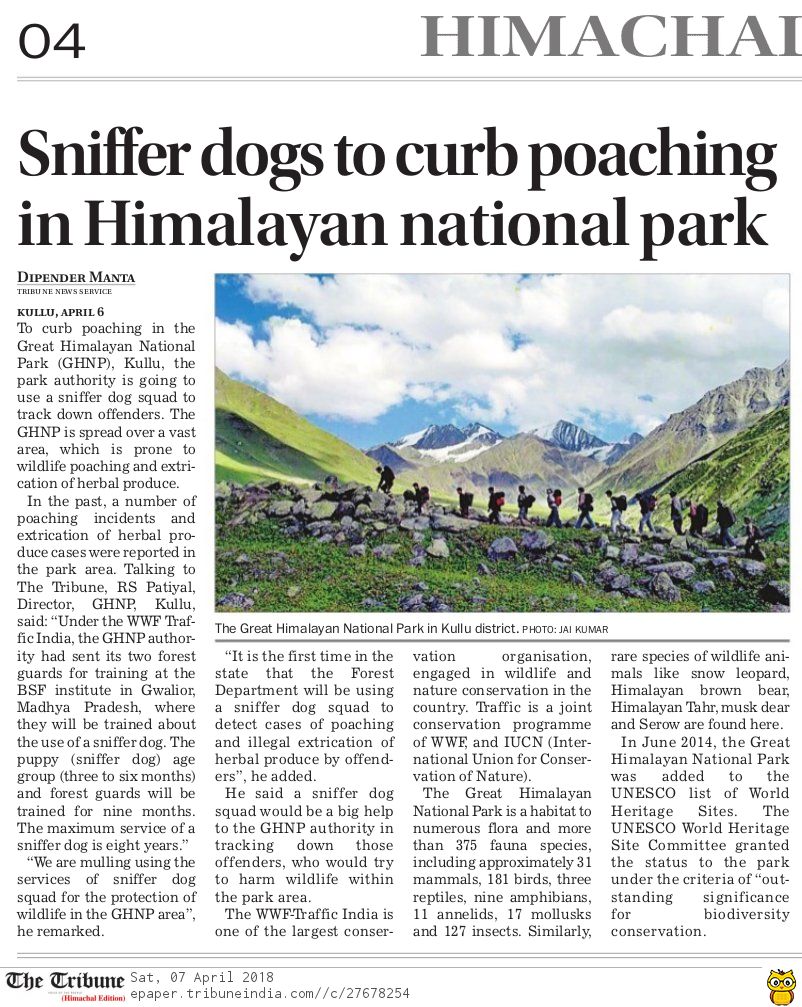
Sniffer dogs to curb poaching in Himalayan national park

Original clipping from The Tribune by Dipender Manta, Tribune News Service, Kullu, April 6 ( click to enlarge)
To curb poaching in the Great Himalayan National Park (GHNP), Kullu, the park authority is going to use a sniffer dog squad to track down offenders. The GHNP is spread over a vast area, which is prone to wildlife poaching and extrication of herbal produce.
In the past, a number of poaching incidents and extrication of herbal produce cases were reported in the park area. Talking to The Tribune, RS Patiyal, Director, GHNP, Kullu, said: “Under the WWF Traffic India, the GHNP authority had sent its two forest guards for training at the BSF institute in Gwalior, Madhya Pradesh, where they will be trained about the use of a sniffer dog. The puppy (sniffer dog) age group (three to six months) and forest guards will be trained for nine months. The maximum service of a sniffer dog is eight years.”
“We are mulling using the services of sniffer dog squad for the protection of wildlife in the GHNP area”, he remarked.
“It is the first time in the state that the Forest Department will be using a sniffer dog squad to detect cases of poaching and illegal extrication of herbal produce by offenders”, he added.
He said a sniffer dog squad would be a big help to the GHNP authority in tracking down those offenders, who would try to harm wildlife within the park area.
The WWF-Traffic India is one of the largest conservation organisation, engaged in wildlife and nature conservation in the country. Traffic is a joint conservation programme of WWF, and IUCN (International Union for Conservation of Nature).
The Great Himalayan National Park is a habitat to numerous flora and more than 375 fauna species, including approximately 31 mammals, 181 birds, three reptiles, nine amphibians, 11 annelids, 17 mollusks and 127 insects. Similarly, rare species of wildlife animals like snow leopard, Himalayan brown bear, Himalayan Tahr, musk dear and Serow are found here.
In June 2014, the Great Himalayan National Park was added to the UNESCO list of World Heritage Sites. The UNESCO World Heritage Site Committee granted the status to the park under the criteria of “outstanding significance for biodiversity conservation.


